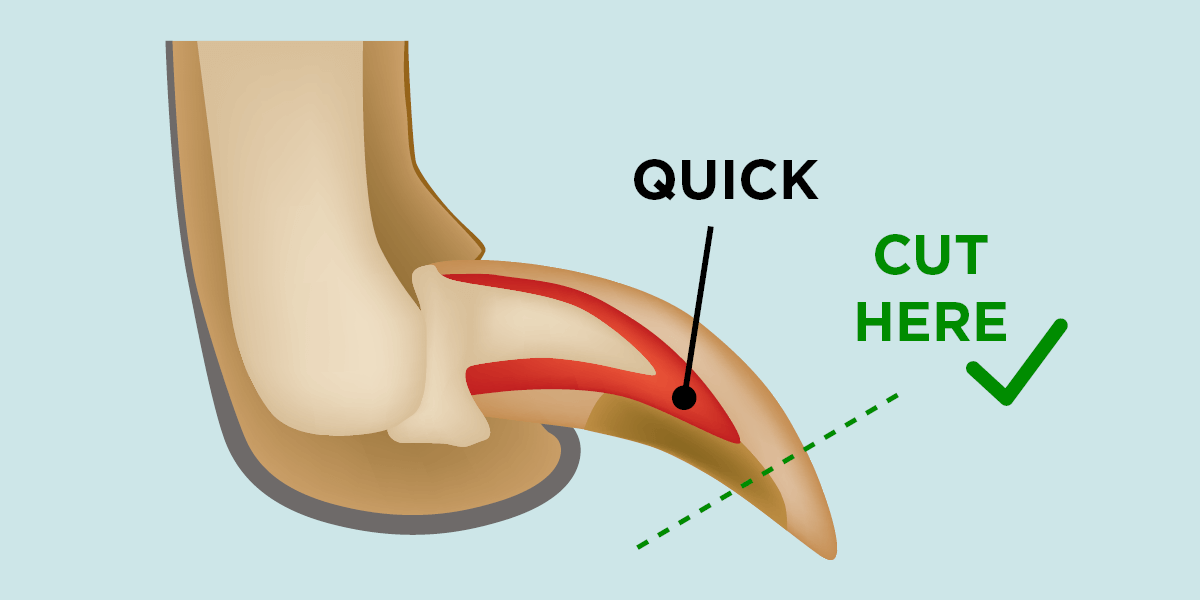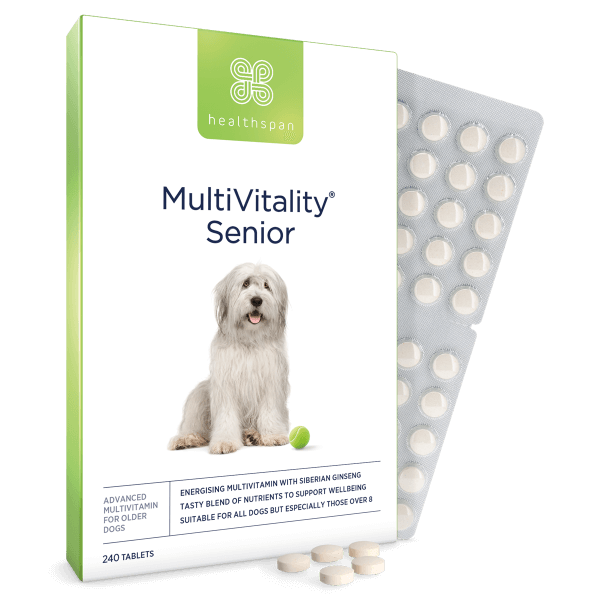For cats as well as dogs, paws often get ignored. As a result, many of the paw and nail problems I see in my consult room could have been prevented, says vet Joanna Woodnutt.
🕒 6 min read
From daily checks to monthly maintenance, here's what you need to know (especially if your dog keeps licking its paw).
Daily care
Dog paws
Dog paws need to be checked regularly (preferably daily); especially for dogs with long fur. To help you get into the habit, check their feet after their last walk of the day.
If their paws are muddy, a quick wash-down is sensible, to help reduce allergic flare-ups and make it easier to check them over. Be sure to look between their toes for ticks, and remove any grass seeds or burrs. In summer, long-haired dogs can have the fur in this area trimmed.
Dog nails
In terms of dogs' nails, brittle claws are more common as they get older, so check for breaks and cracks. If you notice their claws are in poor condition, you can try supplementing with extra biotin, a B vitamin needed for nail growth.
Cat claws and paws
For cats, day-to-day care is simpler, as they're pretty good at grooming themselves. However, do check their paws for ticks or injuries whenever you get a chance (perhaps when they come for a cuddle), by gently pressing their paw pad to view their nails. Look for breaks, scuffs, or anything unusual.
Weekly and monthly nail care
Dog nails
Trimming your dog's claws is also something to keep in mind, to be done weekly or monthly. The frequency depends on the individual dog, as well as their lifestyle: long walks on hard ground (or lots of digging!) will keep nails pared back naturally.
Overgrown claws are prone to breaking (which is painful and can cause infection) and also put abnormal pressure on joints. Don't forget to check whether your dog's dew claw needs trimming too: it's at the back and easily missed.
Cat nails
Cats take care of their claws fairly well by scratching, but as they get older they tend to scratch less, and their claws become tougher – meaning that they may need a little help from you. To check, gently press on the bottom of their foot to extend the claws. They should be clean and see-through, with no half-shed layers visible.
How to clip your pet's nails
You can learn to clip your pet's nails yourself, but it's best to ask your vet to show you. Keep a styptic pen or powder to hand, in case the nail bleeds. An extra pair of hands is always useful, too.
To start, examine the claws, and identify the 'quick' (the inner pink bit). The nails shouldn't be more than 3-4 millimetres longer than the quick, but be careful not to go too short: you don't want to cut the quick, as it's painful and bleeds a lot. On white or clear claws this is easy, but on black claws, it's a bit of a guessing game.
In dogs, make sure to cut the nail at a bit of an angle, so that the claw sits flat on the floor, not on a tip left by trimming. This is less important for cats, who retract their claws.

Common paw problems in pets
Even with the best paw care, problems still develop: from allergies and nail bed infections to issues with a dog's dew claw.
A dog chewing and licking its paw is a characteristic telltale, but other symptoms of nail or paw problems include limping or holding their foot at a funny angle.
If your pet allows, take a closer look (but be careful: they're likely to be sore!) You might spot redness, swelling, or even draining pus. A bad smell is also a sure sign of a problem.
Overgrown claws
Hopefully, regular claw care should reduce the risk of overgrown claws, but it's still possible to get caught out, especially with cats, or with the infamous dog dew claw. Long claws curl around and dig back into the paw pad, causing a lot of pain and infection. They also trap dirt and litter beneath them, which can cause sore pads.
If you spot overgrown claws that are touching the pad, it's best to get a vet to cut the claw and assess whether the pad needs treatment.
Broken claws
Dogs particularly are prone to snapping longer claws while playing, which can cause bleeding and eventually infection. They'll need to see a vet to have the broken nail removed and a bandage may need to be applied.
Grass seed in dog paw
Any foreign body in the paw (such as a thorn) needs to be sorted as soon as possible.
The most common example in the warmer months is grass seeds, which have little barbs that mean they get caught in the fur, and a sharp end that allows them to work their way under the skin. This causes infection and is painful, so you'll usually see dogs (for whom this is a particular problem) licking at the area, and sometimes limping. It can be so painful that even normally docile dogs become aggressive.
If your vet can find a hole, they may be able to remove the grass seed, but your dog will normally need antibiotics too.
Pad cuts and other injuries
Small injuries to the paw pads are not uncommon, especially in cats who have softer pads. They'll usually limp, lick the foot, and may be reluctant for you to touch it.
Checking your pet's paws regularly means you should spot injuries quickly, allowing you to get them sorted at the vet before it gets infected.
Allergies
One of the most common signs of an allergy is licking the feet. Other than becoming saliva-stained, feet usually look normal, although they might also be slightly reddened and inflamed.
Depending what your dog is allergic to, this might happen more in the summer.
Treatment is complex, so you'll need the help of a vet.
Nail bed infections
You might notice your dog licking at one foot or toe repeatedly, and if you look closer, you might see a sore, red, and inflamed area at the nail base. It might smell, too.
Nail bed infections often clear up with some anti-inflammatories and regular bathing, although antibiotics might be needed.
Symmetric Lupoid Onchodystrophy (SLO)
Although this isn't particularly common, symmetric lupoid onchodystrophy is something to consider if your dog's nails are a frequent problem area.
SLO is thought to be an immune-mediated problem, resulting in very painful feet with claws that drop off easily. The claws may grow back wonky, and are very brittle and prone to breaking.
You'll need medication from a vet.
Final thoughts
Paw care is generally simple in both cats and dogs, providing they are checked regularly and trimmed as needed. For troublesome nails, biotin-containing multivitamins are a great help, although a vet visit to rule out SLO is sensible for dogs exhibiting such symptoms.

MultiVitality Senior
Advanced multivitamin for older dogs
- 14 essential vitamins and minerals
- Boosts energy and supports wellbeing
- Supports heart and joint health







